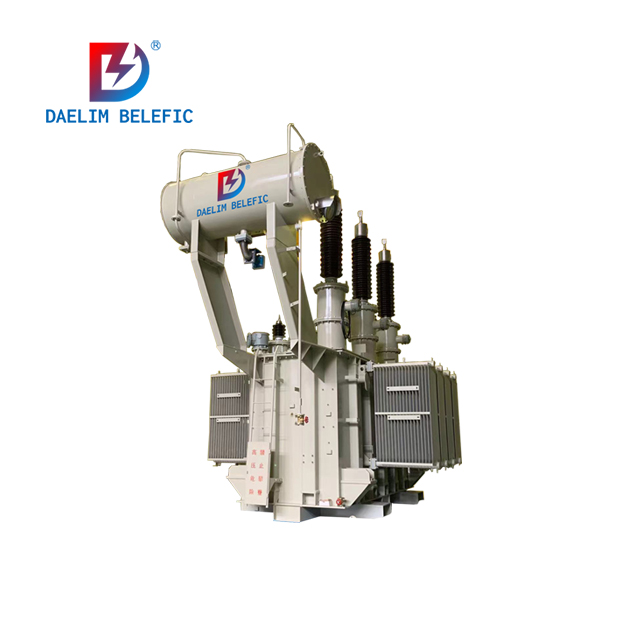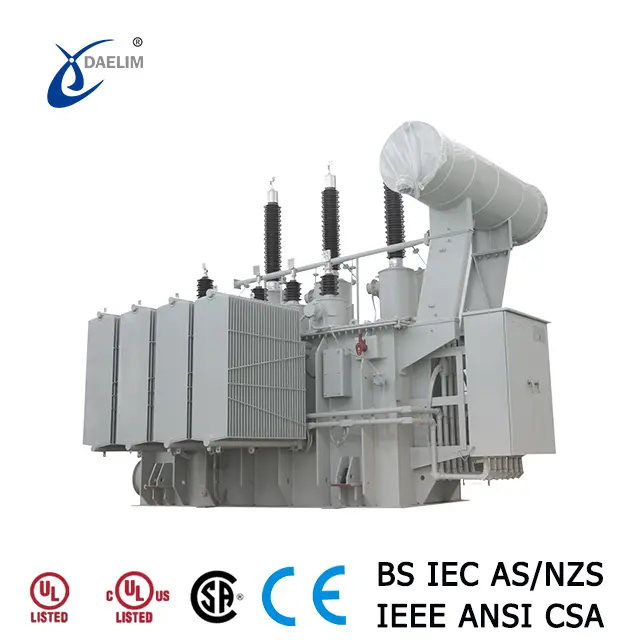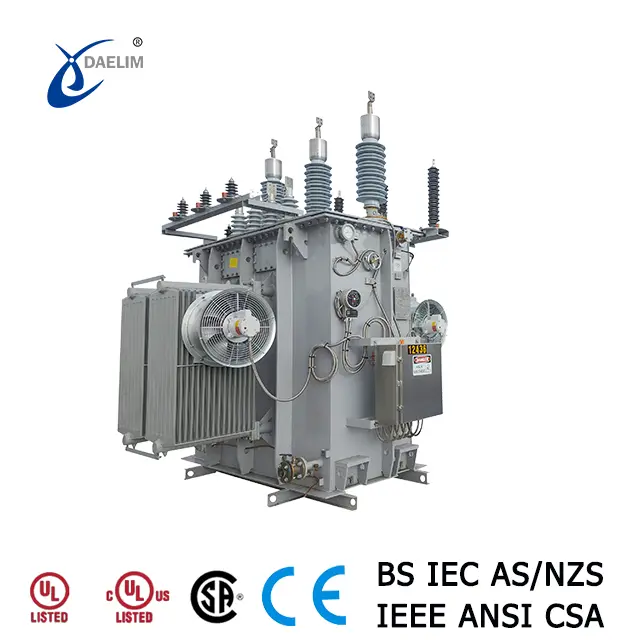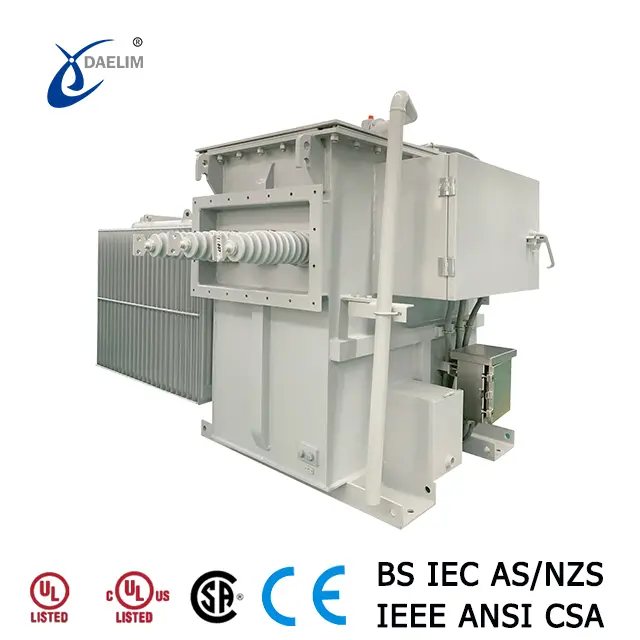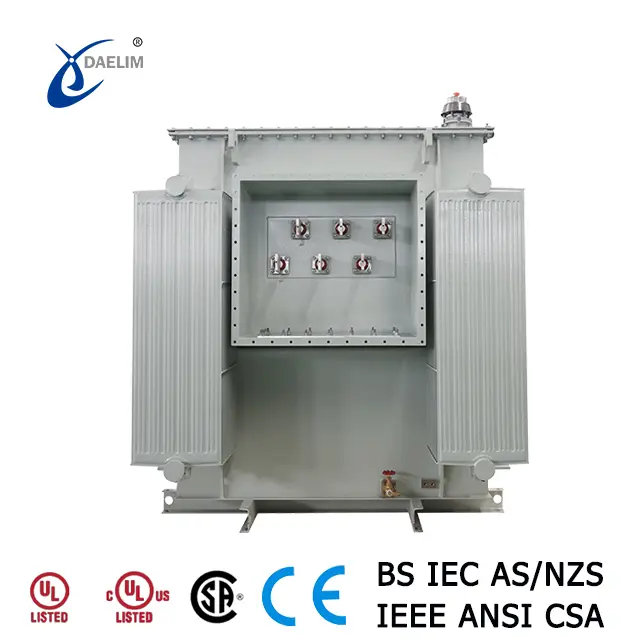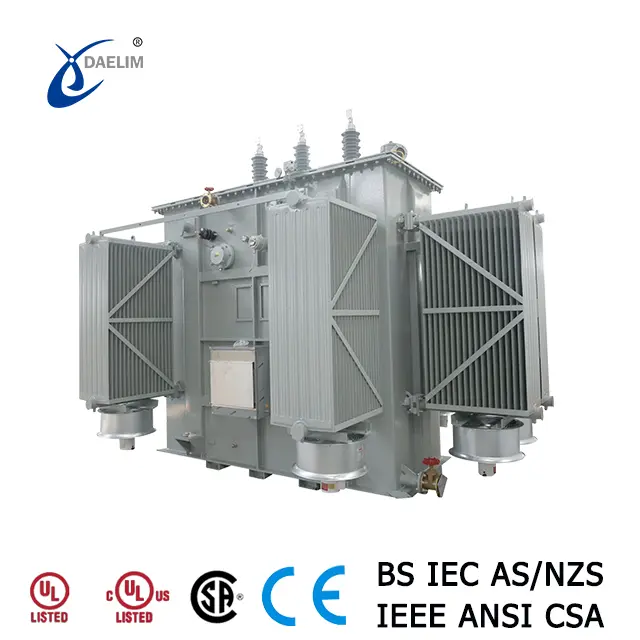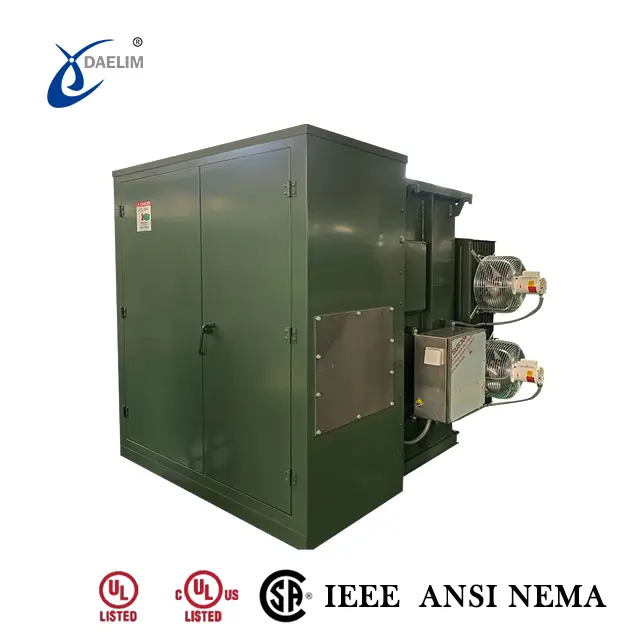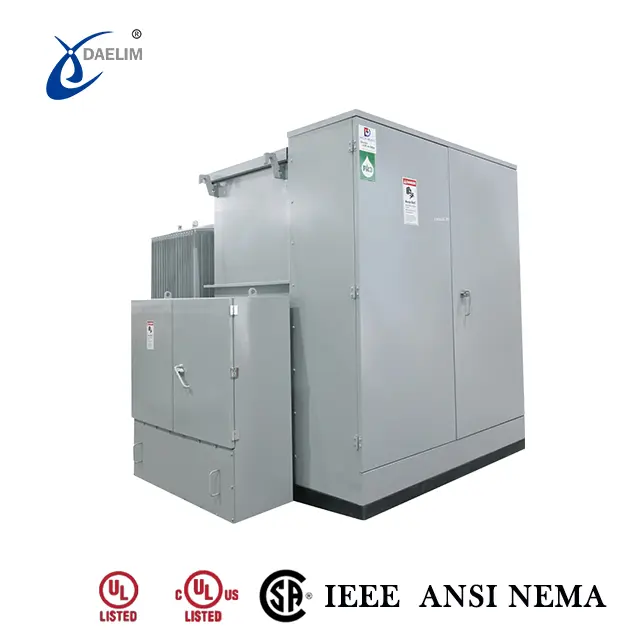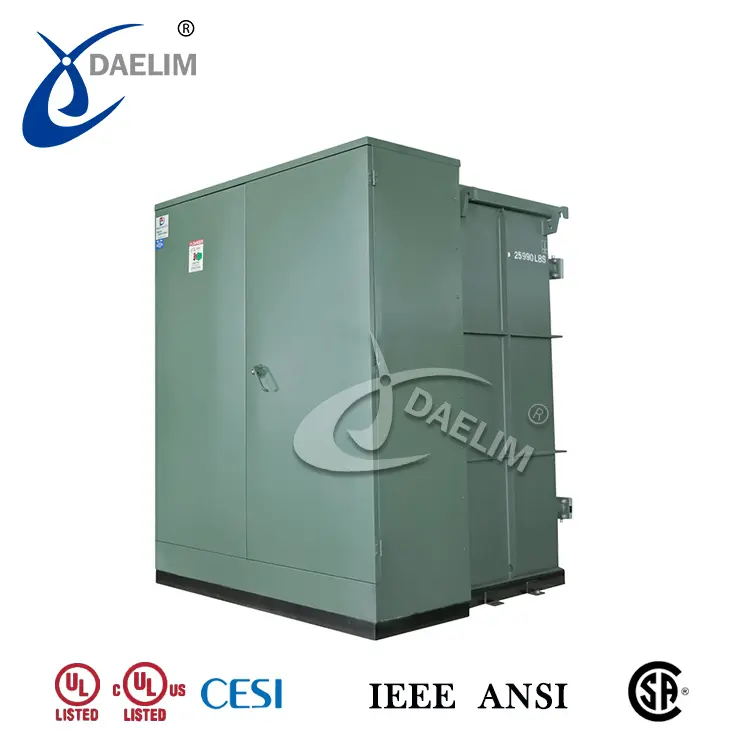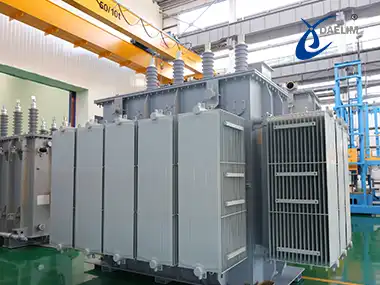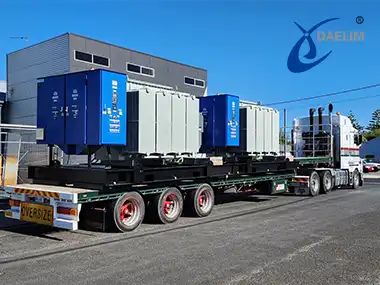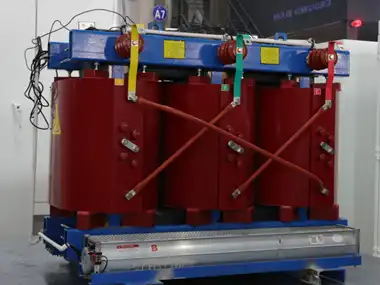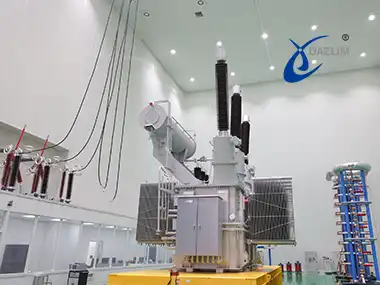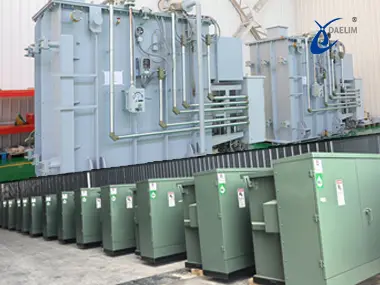Transformer Design & System Grounding (Wye vs Grounded Wye)
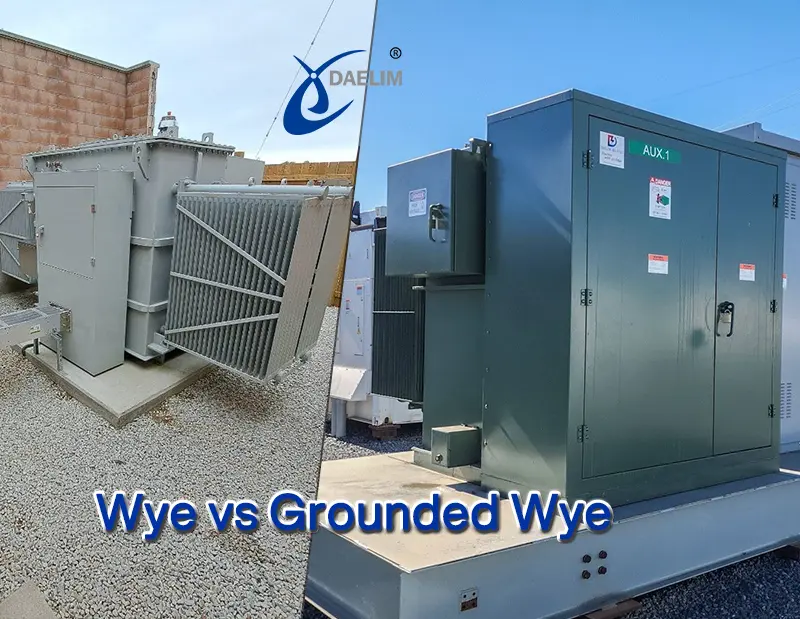
If you are an electrical engineer who works as a designer of electrical transformers or you are a technician or skill worker who works for a transformer service providing company that works to install and maintain electrical transformers. Then it is highly important for you to design and choose the correct configuration of electrical transformer and select the best grounding method as these two things ensure the safety, reliability and efficiency of the electricity distribution system.
Among different types of transformer design & system grounding, grounded wye transformer and ungrounded wye transformer are two most common types of grounding. Our article is all about understanding this wye transformer and grounded wye transformer. We will give you an overview and comparison of transformer design & system grounding (wye vs grounded wye).
Contact Daelim TransformerUnderstanding Wye and Grounded Wye Connections
What is a Wye Transformer Connection?
The wye transformer connection is something that you can refer to as an ungrounded transformer connection. It is a transformer winding configuration in which all three windings of the electrical transformer are connected on a single point. These connections of 3 windings at a single point make the shape of the English alphabet Y. This one single common point of three different windings is also called the neutral point of the electrical transformer. The other ends of the all three windings are connected to their respective line connectors.
This ungrounded neutral point configuration of the electrical transformer provides the ability to deliver voltage at the same time. One is called the phase voltage that is line to the neutral voltage and other is called line voltage that is the voltage from line to line. This makes the wye transformer connection a versatile connection that can be used for various applications.
You may enjoy: The Ultimate FAQs Guide To Transformer Connection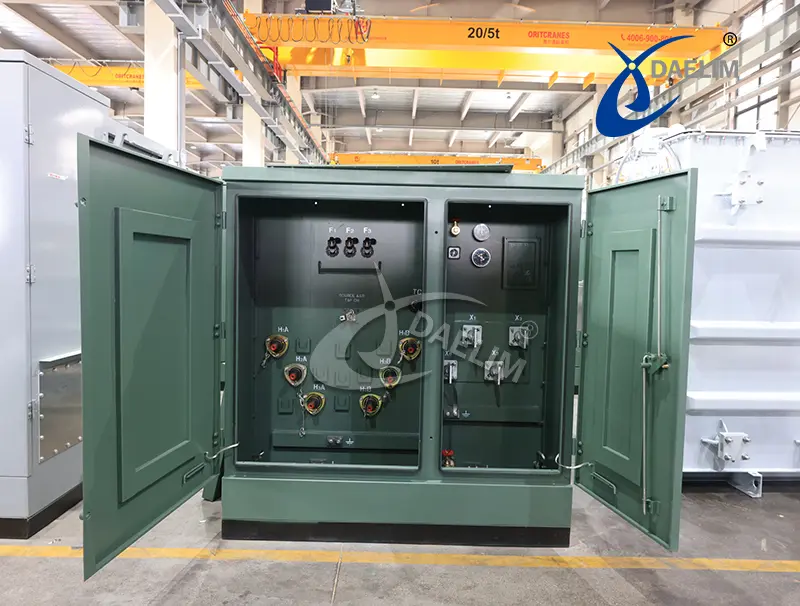
Wye Transformer Diagram Explanation
In order to understand the wye transformer diagram you can imagine three different transformer windings that are placed at an angle of 120 degrees from each other. Now one wire from all 3 windings is taken in connected or at the centre that is called the neutral point or the neutral nod.
Now when three wires from 3 different windings that are placed at an angle of 120 degree will meet at a common point it will make the shape Y. This point can be left floating in the ungrounded configuration but can also be connected to the ground. This depends on the system requirements and application for which the transformer will be used.
Get it free: Power Transformer Diagrams
Application of Wye Transformer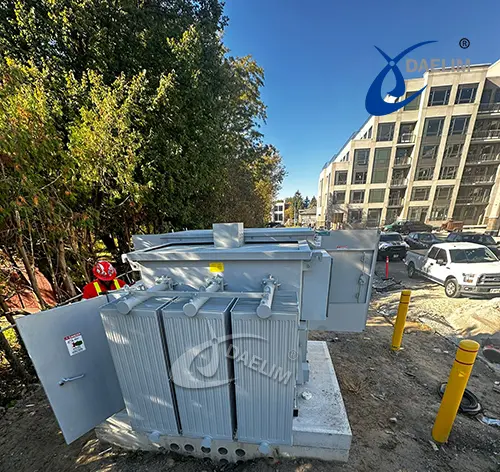
The ability of the wye transformer configuration is that it can leave dual voltage levels at the same time which make them best for both single phase and three phase load at the same time. They are widely used in following industrial applications.
- The wye transformer configuration is widely used in commercial buildings for a variety of single phase loads like lightings, elevators, and even for large HVAC systems.
- This configuration is also use for powering the residential areas where they are part of residential electricity distribution system
- These transformers are also widely used in light industrial setups where they are small manufacturing plants or assembly setups.
- The wye Transformers or also part of medium voltage utility grid system where they are responsible for taking electricity from either main grid from electricity generating plants and then distributing it to the distribution centres.
Keep reading: The Ultimate Guide to delta wye transformer
Advantages and Disadvantages of Ungrounded Wye
There are certain advantages and disadvantages of an ungrounded wye system due to which it is recommended for certain applications while not recommended for others.
- The ungrounded wye transformers configuration works to reduce fault current in a single line to ground fault. This helps limit the damage that can happen to the transformer over the electricity distribution network.
- The ungrounded wye transformer configuration is the simplest most design configuration that you can get for any type of isolated and sensitive system.
- The disadvantage of the ungrounded wye configuration is that if the fault happens in the system, then it will be very difficult to detect that fault and that fault might remain undetected in the system until it damages a specific part or the entire electricity distribution system.
- The ungrounded wye transformer configuration is not suitable at all for the modern protection systems. It is due to the reason that these systems rely heavily on ground reference which the ungrounded system cannot provide.
What is a Grounded Wye Transformer?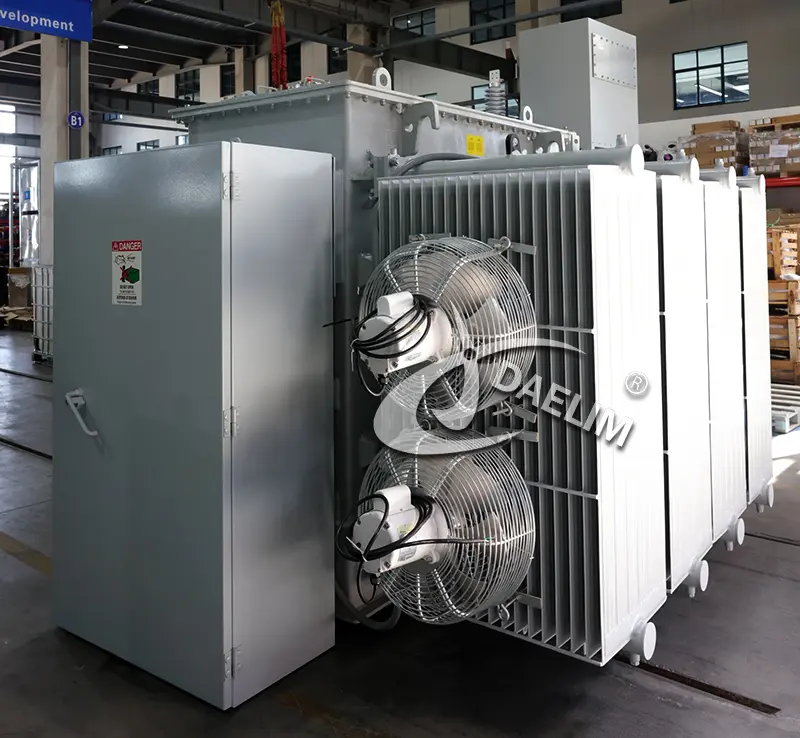
Definition and Concept of Grounded Wye
The grounded wye transformer configuration is just a wye transformer configuration but with intentional earthing of the neutral point. The neutral point that was created as a result of connection of three transformer windings placed at 120 degree angle, is intentionally grounded during the manufacturing and assembly process.
This intentional grounding of the neutral point increases the reliability and efficiency of the transformer and electricity distribution system by creating a low impedance path for any type fault current that otherwise can easily damage transformer parts and produce faults in the system. This grounding also stabilizes the voltage levels across the electricity distribution system during any type of faulty conditions or when there is an unbalanced load on the transformers.
Importance of Neutral Point Grounding
There are several very good reasons why we intentionally do grounding of neutral point of wye transformer configuration to make it a grounded wye transformer configuration.
- The grounded wye transformer configuration ensures a quick fault detection in the system.
- This configuration is designed and developed to deliver efficiency and it does so by reducing the transient overvoltage in the system.
- The grounded wye transformer configuration is also designed in a manner that it provides a return path for the unbalanced current.
- The working mechanism of the grounded wye transformer helps stabilize the electricity distribution system and ensure safety of the system.
You may enjoy: Requirements for Transformer Core Grounding Points
Applications of Grounded Wye Transformers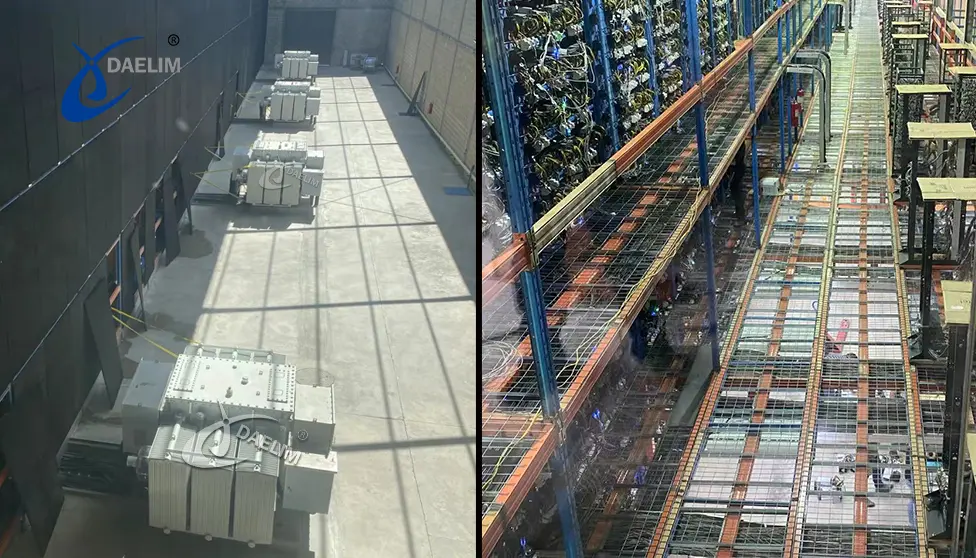
Based on how these grounded wye transformers are designed and develop their certain application for which these transformers are highly recommended.
- Due to their excellent reliability, safety and efficiency these transformers are used in the utility distribution network of electricity.
- These transformers are also used in large power grid stations that are specifically used to supply electricity to commercial and residential areas.
- As these transformers or white safe and reliable in their performance. These types of transformers are always highly recommended for sensitive applications like data centres, hospitals and other industries where quality of electricity is very important for safe operations.
Advantages and Disadvantages grounded Wye
Like the ungrounded wye transformer configuration the grounded wye transformer configuration has several advantages and disadvantages of its own.
- The grounded system is much safer as compared to the unground system because of its ability to quickly and accurately detect faults in the system.
- The system is highly reliable and is recommended for all types of sensitive applications because of its ability to maintain voltage stability during all types of unbalanced loading conditions or faults in the system.
- The system is designed and developed to deliver a single phase load with stable neutral.
- The biggest disadvantage of the grounded system is that it always has a higher fault current level than the ungrounded system. The higher level of the needs a much stronger and robust system to protect the sensitive parts and that at extra cost to the transformer manufacturing.
- The grounding system is always more complex than the ungrounded system and this complac design increases cost and time needed to design and manufacture the product.
Differences Between Grounded and Ungrounded Wye Systems
| Aspect | Grounded Wye | Ungrounded Wye |
| Neutral Point | Connected to earth | Floating (not connected to ground) |
| Fault Detection | Easy and fast | Difficult |
| System Protection | Robust | Requires special detection equipment |
| Voltage Stability | Stable during faults | May experience voltage shifts |
Considerations for System Grounding and Fault Management
The question of which grounding system should you adopt for your application cannot be answered in a straight and single word. This is because there are certain requirements for each application and based on that requirement you can select which type of grounding method you need for your electrical transformer and application.
Load Type and Balance
The first factor in the selection of system grounding and fault management is the type of load your application has and the load balance you need for your application. Talking about the type of load you need to mention what load your application has, does it have a single phase load or a three phase load, because in single phase load it is very important to have proper grounding as single phase connections or single phase loads always need a stable and essential neutral point.
If your load attached to the transformer produces a lot of unbalanced load then you need a grounded configuration because the unbalanced load can cause a lot of current flow through the neutral conductor. To tackle this you either need a very rigid system that will cost extra or the high current can affect your sensitivity.
Fault Tolerance of Connected Equipment
If you are working in industry or your specific application has a very small tolerance for any type of electrical fault then you need a grounded system that can protect your sensitive equipment from all types of faults. In a grounded wye transformer it is very easy to locate the fault and quickly resolve the problem that reduces the downtime of the electricity supply system.
Similarly if your application has some fault tolerance and can resist some fault that might occur in the electricity distribution system then you need a cost effective ungrounded wye Transformer configuration.
Protection Scheme Compatibility
There are other protection systems attached with the electrical transformer in our electricity distribution system or with the application or in the industrial. The transformer winding configuration must be compatible with the safety related instruments or protection systems in order to deliver complete safety and system efficiency.
Safety Regulations and Standards
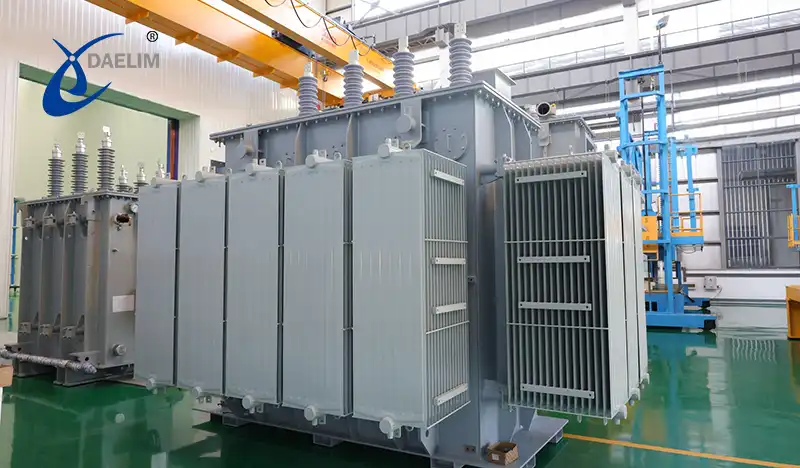 The last factor here is the national and international standards that will play a very important role in your selection of the grounding system for your electrical transformer and electricity distribution system. In certain regions of the world you are bound to follow any one of the transformer rounding systems and you can only take configuration that your original standards allow you to take for all types of applications. There are certain regulatory bodies Like the IEEE that work to regulate the use of specific grounding methods for transformer grounding configurations.
The last factor here is the national and international standards that will play a very important role in your selection of the grounding system for your electrical transformer and electricity distribution system. In certain regions of the world you are bound to follow any one of the transformer rounding systems and you can only take configuration that your original standards allow you to take for all types of applications. There are certain regulatory bodies Like the IEEE that work to regulate the use of specific grounding methods for transformer grounding configurations.
The IEEE 142 also known as the Green Book is a piece of instruction that offers recommendations on the grounding of system industrial electrical systems. Similarly IEEE 241 also known as the Gray Book focuses on the grounding of electrical systems on electrical power distribution machines like the transformer in commercial buildings. The national electrical code NAC is a legal standard body of the United States of America that issues instructions and regulations for grounding and bonding electricity related systems in residential and commercial systems.
Learn more about Transformer Standards
Conclusion
We have delivered you a complete content on the transformer grounding configuration because the transformer grounding configuration plays a very important role in the transformer design and its quality operation. Whether you will use ungrounded wye transformer configuration or grounded wye transformer configuration depend on the application and several other factors that we have explained above. Each transformer grounding configuration has its own benefits and drawbacks and each configuration type is recommended for a specific set of applications for which it can deliver the best value of money.
Follow Up
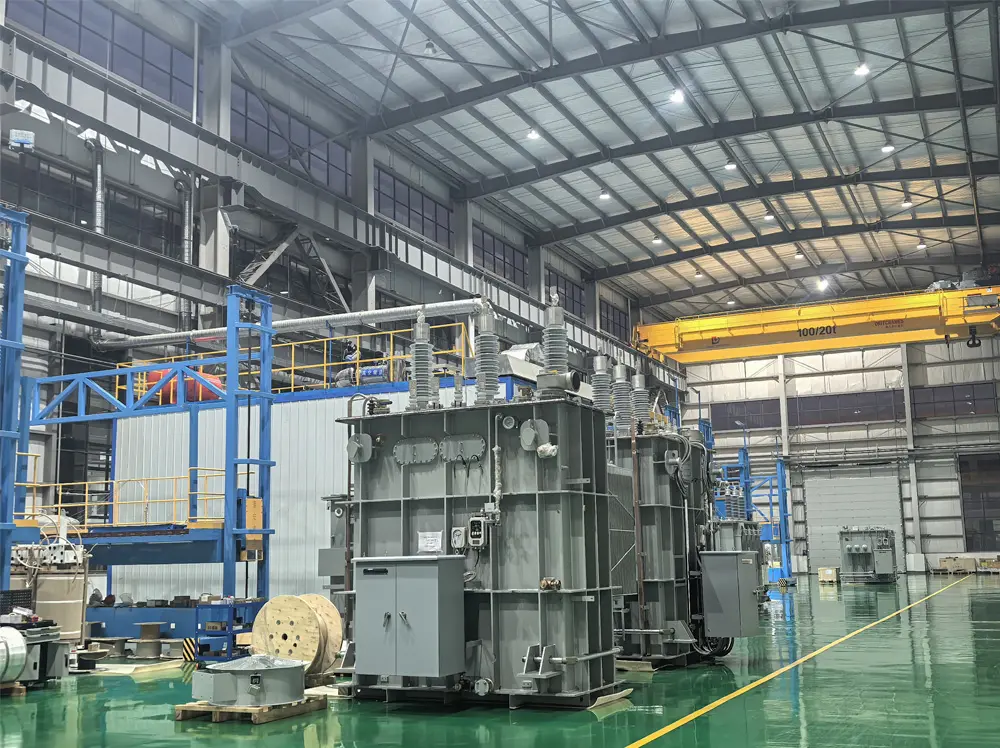
The Transformer grounding configuration is very important for the safety, reliability and stability of our electricity distribution system. Wrong selection of transformer grounding configuration can result in permanent damage to the electrical load attached to the transformer. We at Daelim Transformer, offer electrical transformers of all types sizes and of different grounding configurations. If you have any questions about the electrical transformer or their grounding configuration you can contact us and our team of experts will lead you through the process.
Related Products
Related Article
Comprehensive Guide on ANSI Transformer Standards
ANSI transformer standards ensure the safety, reliability, efficiency, and compatibility of electrical transformers in the U.S. They guide transformer design, materials, testing, maintenance, and installation to meet national and international requirements. These standards promote uniformity across manufacturers, ensuring stable integration into power systems. Daelim Transformer offers ANSI-compliant transformers of various types and capacities.
How to Safely Transport Power Transformers Using a lowboy Trailer
Power transformer transportation requires specialized lowboy trailers for safety and stability due to their massive size and sensitivity. Key factors include weight calculations, route planning, weather, permits, and secure loading. Daelim Transformer offers expert transformer design, customization, global delivery, and reliable after-sales support, ensuring safe and efficient transport from factory to installation site.
Should Dry Type Transformers Be Installed Indoors or Outdoors?
This article compares indoor and outdoor dry type transformer installations, covering requirements, applications, ventilation, safety, and pros and cons. Indoor setups offer better protection and security but require more space and cooling. Outdoor installations save indoor space and reduce fire risks but need weatherproofing and enhanced security. Installation choice depends on environment, safety, and application needs.
A Complete Guide on Transformer FAT Test
Transformer FAT (Factory Acceptance Test) ensures that transformers meet design specifications and international standards for safe, reliable, and efficient operation. It includes inspections and electrical tests like resistance, insulation, and voltage tests. Performed by the manufacturer, client, and sometimes third-party, FAT helps prevent failures, reduce maintenance costs, and ensure long-term reliability.
Comparing Amorphous Core and Silicon Steel Core Transformers
Amorphous and silicon steel cores are key transformer materials. Amorphous cores offer lower core losses, higher efficiency, and are ideal for energy-efficient, eco-friendly applications, but are costly and fragile. Silicon steel cores are cheaper, durable, and suitable for high-power, mass applications, though with higher losses. Choice depends on efficiency needs versus cost considerations.
Guide to Common Industrial Transformer Voltages
Selecting the right industrial transformer voltage is crucial for equipment efficiency, safety, and energy loss reduction. Voltage must match machinery needs, regulatory standards, and allow for future expansion. Transformers are categorized into low, medium, and high voltage types based on application requirements in manufacturing, services, data centers, and power distribution systems.

